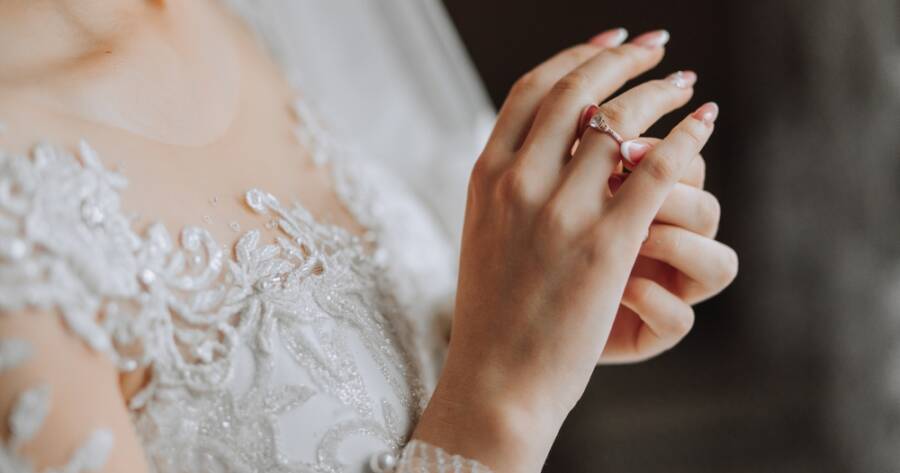Purchasing a diamond engagement ring is a significant milestone in any relationship, both emotionally and financially. With the average cost running into thousands of dollars, many are left wondering how they might balance getting a quality piece with budgetary constraints. Fortunately, there are several strategies that could help you save big on diamond engagement rings without compromising on style or sentiment. Explore tips and tricks that may make the diamond-buying process both affordable and rewarding.
Understanding the 4Cs
The cornerstone of diamond quality assessment lies in the 4Cs: Carat, Cut, Clarity, and Color. Each factor contributes uniquely to a diamond’s appearance and value. Grasping these elements is essential to balance quality and cost effectively.
Carat
Carat weight measures a diamond’s size, with higher weights often increasing price. However, slight differences in carat can yield considerable cost savings while remaining visually similar. Consider opting for carat weights just below “threshold” points, like 1.0 or 2.0 carats, where subtle reductions translate to savings without sacrificing perception.
Cut
A diamond’s cut determines sparkle and brilliance, significantly affecting appearance. Prioritize cut quality, as a well-cut diamond can enhance perceived quality even with lower clarity or color grades. Evaluating cut on a scale from Poor to Excellent or Ideal helps gauge a diamond’s capacity to reflect light and dazzle.
Clarity
Clarity assesses internal and surface flaws, or inclusions and blemishes. While higher clarity fetches premium prices, many inclusions remain invisible to the unaided eye. Consider slightly included (SI) or very slightly included (VS) grades to balance aesthetics and budget, ensuring sparkle supersedes minor imperfections.
Color
Color measures how much color tints a diamond, with higher grades appearing more colorless. For many, a near-colorless (G-H) grade balances quality and affordability, offering a visually pleasing diamond without the premium attached to top tiers.
Exploring Setting and Metal Choices
The setting and metal choice significantly impact both aesthetics and cost. Examining how these factors influence pricing is helpful in managing costs while enhancing the diamond’s allure.
Settings
Settings serve to hold the diamond, with popular choices including prong, bezel, and halo. Halo settings, for instance, use smaller diamonds encircling the primary stone, potentially enhancing perceived size and sparkle without increasing carat. Simple designs may lower costs and emphasize the diamond’s natural beauty, while intricate settings enhance visual interest.
Metals
Selecting metal types such as platinum, gold, or white gold influences overall ring price. Platinum, known for its durability and hypoallergenic properties, often costs more than gold. White gold offers a similar appearance at a reduced price. Consider personal preferences and lifestyle for the most suitable metal choice, balancing elegance with practicality.
Prioritizing What Matters Most
While each 4C affects diamond value, focusing on what matters most to you and your partner simplifies decisions. Determine which factors—size, brilliance, or absence of color—align with personal tastes and prioritize accordingly.
Evaluating personal preferences ensures money spent reflects shared values and enhances satisfaction. Sometimes, the most dazzling diamonds result from thoughtful compromises and appreciation of inherent qualities rather than flawless precision.
Using Certification for Assurance
Diamond certification offers assurance of quality, authenticity, and accuracy in the 4Cs grading. Reputable organizations like the Gemological Institute of America (GIA) or the American Gem Society (AGS) provide certificates guaranteeing standardized evaluations.
Obtaining certified diamonds prevents discrepancies and ensures value for money. Certification helps navigate variances in quality and price, empowering buyers to make such an important purchase confidently.
Shopping Smartly and Comparing Prices
Shopping smart means exploring various retailers, both brick-and-mortar and online, to compare price points and quality. Visiting multiple stores provides perspective on current market trends and helps determine reasonable expectations.
Online retailers often offer competitive pricing by minimizing overhead costs, showcasing extensive selections with convenience. However, verify return policies, warranties, and customer reviews to ensure a trustworthy transaction.
A competitive approach extends to negotiation, where gently discussing terms—such as markdowns or upgrades—can yield benefits. Cost transparency and openness foster strong customer relationships, possibly leading to a favorable purchasing experience.
Considering Alternative Options
For those eager to balance cost and quality, alternatives beyond natural diamonds exist, like lab-created diamonds or diamond simulants. Lab-created diamonds have the same physical and chemical properties as mined diamonds but come at a fraction of the price. Diamond simulants like moissanite offer similar brilliance and appearance.
Balancing ethical concerns, budget constraints, and aesthetic desires may involve considering more than traditional diamond options. Knowledge of alternatives widens choices and solutions.
A Diamond Decision
Balancing quality and cost when buying a diamond engagement ring demands informed choices and preference prioritization. By understanding the 4Cs, considering settings and metals, using certifications, and exploring alternatives, you can find a ring that captivates and represents long-lasting love.
Thoughtful exploration of vendors and options allows strategic spending, optimizing both beauty and lasting value. As you embark on this meaningful purchase, let informed decisions enhance your journey to create a symbol of commitment without exceeding your budget.





